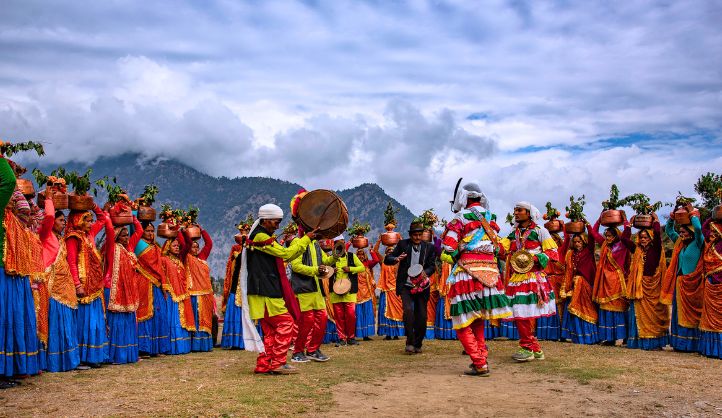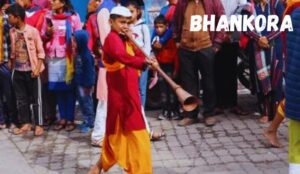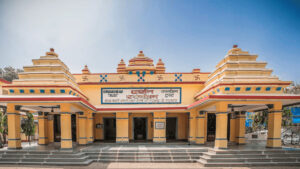🕺💃Discover the vibrant world of Uttarakhand folk dances! Explore the rich cultural tapestry through 10 captivating dances, each with its unique story and attire. 🌟👘 Immerse yourself in the rhythms and colors of Garhwali and Kumaoni traditions. 🎶🌈 Uttarakhand’s cultural heritage comes alive with every graceful step and colorful costume. 🏔️✨
Introduction
Uttarakhand, nestled in the lap of the Himalayas, is not only known for its breathtaking landscapes but also for its vibrant cultural heritage. One of the most captivating aspects of this culture is its folk dances.
These dances are not just rhythmic movements; they are expressions of the rich traditions, history, and emotions of the people of Uttarakhand. In this article, we will take you on a journey through the rhythmic world of Uttarakhand folk dances, exploring their significance, styles, and the stories they tell.
10 Famous Folk Dances Of Uttarakhand
1. Jhora
Jhora stands as one of the most vibrant and celebratory folk dances of Uttarakhand. Typically performed in circles, it finds its place in various festivals and occasions. The dancers, dressed in traditional attire, move gracefully to the beats of folk music, creating a mesmerizing spectacle. The dance symbolizes unity, joy, and togetherness within the community, fostering a sense of belonging.
2. Chholia
Chholia is a martial dance form that embodies the valor and courage of the people of Uttarakhand. Dancers, armed with sticks, engage in powerful and rhythmic movements. The performance narrates stories of bravery and heroism, often reflecting historical events and legendary battles. It’s a captivating blend of strength, agility, and artistry.
3. Langvir Nritya
Langvir Nritya is an exhilarating dance that pays homage to the legendary warrior, Langda. Dancers showcase incredible strength and agility through vigorous movements and acrobatics. This dance leaves the audience in awe of the dancers’ physical prowess and skill, making it a truly extraordinary performance.
4. Barada Nati
Barada Nati is a traditional Kumaoni dance performed during religious festivals and celebrations. Dancers adorn colorful attire and wear wooden masks representing various characters from mythology. The dance narrates stories from ancient scriptures, bringing them to life with vibrant expressions and graceful movements, adding charm and cultural depth to festive occasions.
5. Pandav Nritya
Pandav Nritya is a unique and captivating dance form that narrates tales from the epic Mahabharata, focusing on the Pandava brothers. Dancers don elaborate masks representing the Pandavas and enact scenes from the great epic. It’s a mesmerizing and dramatic performance that captivates the audience with its storytelling prowess.
6. Chancheri
Chancheri is a joyful harvest dance performed exclusively by women. During this dance, women celebrate the bountiful harvest season with exuberant dancing and singing folk songs. The circular dance symbolizes unity and joy, reflecting the agricultural traditions and the close-knit bonds within the community.
7. Chhapeli
Chhapeli is a traditional Kumaoni dance that radiates happiness and is commonly performed during weddings and festivals. Dancers create rhythmic patterns by clapping their hands and executing synchronized steps. This beautiful expression of joy and celebration brings an infectious energy to any gathering.
8. Thali
Thali is a captivating dance where women skillfully balance brass plates (thali) on their heads while dancing gracefully. The melodic tinkling of the plates adds a unique musical element to the performance, creating a visual and auditory spectacle. This dance embodies grace, balance, and precision.
9. Rasu Nritya
Rasu Nritya is a religious dance that pays homage to Lord Krishna, a beloved deity in the region. Dancers reenact episodes from Lord Krishna’s life, infusing the performance with devotion and spirituality. It’s a deeply meaningful expression of faith and cultural reverence.
10. Jaguars
Jagars are traditional ritualistic dances performed to invoke the blessings of local deities. These dances hold immense cultural and spiritual significance in Uttarakhand. Accompanied by rituals and ceremonies, Jaguars are a vital part of the region’s religious and cultural tapestry, connecting the people with their beliefs and traditions.
The Dance Costumes
1. Garhwali Attire
In the Garhwal region of Uttarakhand, dancers don traditional attire that reflects the rich heritage of the area. The costumes are a testament to the cultural diversity and aesthetics of the region.
- Women’s Attire: Garhwali women typically wear colorful sarees with intricate designs and heavy jewelry. These sarees are adorned with vibrant embroidery, making the dancers look resplendent. The jewelry includes silver necklaces, bangles, and earrings, adding to the overall elegance of the performance.
- Men’s Attire: Garhwali men often opt for traditional dhotis paired with turbans. These outfits are not only comfortable for dancing but also symbolize the simplicity and authenticity of Garhwali culture. The turbans, in particular, are often embellished with decorative elements, showcasing a touch of regality.
2. Kumaoni Attire
In the Kumaon region of Uttarakhand, the dancers’ attire is characterized by its vibrancy and intricacy, reflecting the cultural diversity and creativity of the area.
- Women’s Attire: Kumaoni women are known for their bright and heavily embroidered dresses. These dresses feature a riot of colors and intricate patterns, adding a burst of energy to the performances. The attire also includes colorful dupattas (scarves) that are gracefully draped.
- Men’s Attire: Kumaoni men typically wear kurta-pajamas along with distinctive headgear. The kurtas are often complemented with colorful jackets or waistcoats. The headgear, known as ‘topi,’ varies in style and design, reflecting the wearer’s community and occasion.
3. Thali Dance Attire
The Thali Dance, where women balance brass plates on their heads while dancing, has a unique costume element that adds to the visual appeal of the performance.
- Women’s Attire: Women performing the Thali Dance wear traditional dresses that allow them to move gracefully while balancing the thalis. These dresses are often vibrant and may include skirts or lehengas paired with cholis (blouses). The focal point of their attire, of course, is the brass thali itself, which they balance with remarkable skill.
The Cultural Significance
Preserving Traditions
Uttarakhand folk dances play a crucial role in preserving the state’s traditions. Through these dances, the younger generation connects with their roots, ensuring that the cultural heritage endures.
Celebrating Festivals
Festivals in Uttarakhand are incomplete without folk dances. These performances add a festive spirit to celebrations, making them more joyful and memorable.
Conclusion
Uttarakhand’s folk dances are not just movements; they are living expressions of a rich cultural heritage. Through these dances, the people of Uttarakhand celebrate their traditions and share their stories with the world.
The grace of Garhwali dances and the vibrancy of Kumaoni performances reflect the spirit of this beautiful state. So, the next time you visit Uttarakhand, don’t miss the opportunity to witness these mesmerizing dances.
FAQs Related to Uttarakhand Folk Dances
Q1: What is the significance of Garhwali dances?
Garhwali dances hold cultural significance as they help preserve traditions and promote unity within the community.
Q2: Are Kumaoni dances different from Garhwali dances?
Yes, Kumaoni dances have their unique style and attire, setting them apart from Garhwali dances.
Q3: When can I witness these folk dances in Uttarakhand?
You can witness these folk dances during various festivals and cultural events held throughout the year.
Q4: Can tourists participate in these dances?
Tourists are often welcome to join in the celebrations and learn a few dance steps from the locals.
Q5: Where can I learn more about Uttarakhand’s cultural heritage?
To delve deeper into Uttarakhand’s cultural heritage, visit local museums, and interact with the friendly locals who are always eager to share their stories and traditions.





